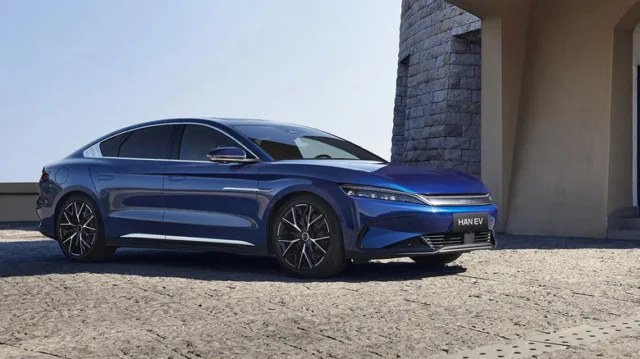
If there’s one facet of Chinese industry that’s almost universally known today, it’s how cheaply everything’s produced in comparison to other regions, and the automotive sector is no exception. But unlike what some stereotypes might say, this isn’t strictly due to governmental and workforce policies, nor is it due to China effectively plagiarizing Western designs. While the latter has been a hot topic in automotive culture for decades, that doesn’t apply to indigenous Chinese designs that are also inexpensive, some of which rank among the fastest cars of 2025 not available in the U.S. So, if it doesn’t have anything to do with the car’s developmental history, then why are they so cheap?
Undoubtedly, a part of it relates to the famously toxic work culture around its industrial sectors. The automotive industry, in particular, suffers heavily from weaker human rights practices and forced labor, but that’s not the end of the story. Let’s remove the politics from the equation and balance the scales; pound-for-pound, it’s likely that China would still be producing more affordable new cars, even with better working conditions. And the reasons have to do with supply and demand.
Take silicon, for example, a common mineral used in advanced electronics manufacturing. China is responsible for producing an overwhelming percentage of the world’s total silicon stores, meaning there’s no shipping or import fees. China also boasts advanced manufacturing processes of those components, meaning cheaper, more streamlined production. And lastly, the governmental policies regarding the advanced automotive industry heavily favor electric vehicle (EV) development, incentivizing manufacturers beyond what’s seen in the West. Especially in the United States, where a robust EV charging infrastructure is still a relatively new phenomenon in comparison to China.
Read more: 6 Cars With The Best AWD Systems (And 2 With The Worst)
A Robust Infrastructure
No matter how much cost-cutting you make, the fact remains that you still need to procure raw materials to produce cars in the first place; China holds such a stranglehold on these crucial resources that many worldwide manufacturers are dependent on Chinese imports for their continued productivity. These include metals, petroleum-based products, electric circuitry, and more, and go well beyond silicon. For instance, China holds 90% of the world’s magnesium production, a vital element in producing specialized lightweight metals. Not being beholden to other nations with regards to procuring these resources is incredibly lucrative, and China uses this fact to substantially cut costs since there’s no logistical overhead or tariff to worry about.
The vast majority of these savings are in the Chinese EV market, with companies focusing on high volume and economies of scale to help streamline prices. It also helps that China enjoys cheaper batteries — the Chinese hold significant cost advantages against the United States, which imports most of its lithium-ion batteries from China. Moreover, as battery prices plummet in China due to manufacturing and technical advancements, nations dependent on its exports benefit less in comparison, due to competitive advantages, tariffs, and so on.
Lastly is the question of infrastructure. China produces half of all EVs on today’s roads and needs a system that supports such a large volume. And China succeeds here as well, with 4.22 million EV charging ports in 2024, plus 830,000 public charging stations, about 12 times more charging stations than the United States’ 61,000. This allows the average Chinese consumer to viably use such a car almost anywhere.
Governmental Subsidies And Mass-Market Appeal
What’s the first thing many Westerners picture when conjuring up an image of an EV? A lot of the time, it’s luxury. Many electric cars today feature outstanding levels of performance and technological excesses, from Tesla to Rivian to Porsche; these cars, at one point, represented the bleeding-edge of automotive technology and were expected to be equipped — and priced — as such. And that price largely hasn’t receded; a new Dodge Charger Daytona EV, for instance, starts at about $60,000, the same price as a Scat Pack Widebody in 2023. China, meanwhile, faces far less inflation by comparison; in fact, China’s cheapest EV, the BYD Seagull, starts at just $7,800 and serves a similar function to a basic Fiat 500e; so what’s the deal here?
In short, much of that price difference is due to aggressive competitiveness in the EV market, to the point where it’s actually surpassing internal-combustion engine sales in China. Market estimates suggest that more than half of new car sales in China will be EVs, and that kind of demand requires mass-market appeal to all budgetary ranges. Put simply, in the United States, the average EV price is over $55,000. In China, it’s $34,000.
Aside from the aforementioned supply costs, much of that disparity comes from lower labor costs and government subsidies which favor such cars. These include procurement contracts and tax breaks that have cultivated a plethora of entry-level EV brands. And considering all the battery components come from China, naturally, the nation seeks to hold its effective monopoly on the industry for as long as the technological development allows, hence the startlingly low prices.
Want the latest in tech and auto trends? Subscribe to our free newsletter for the latest headlines, expert guides, and how-to tips, one email at a time.
Read the original article on SlashGear.







